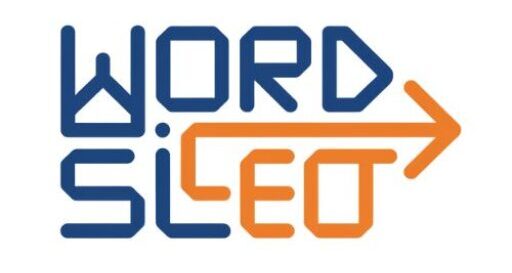In the customer service industry, the phrase “How may I help you?” is a staple. It’s polite, formal, and widely understood. But using this same phrase repeatedly can feel a bit stale over time.
To keep interactions fresh and engaging, it’s important to have a variety of phrases in your communication toolbox. This post will explore 11 alternative ways to say “How may I help you?” in customer service.
These alternatives can be used to enhance engagement, build rapport, and meet your customer’s needs with a personalized touch.
Other Ways to Say “How May I Help You”
Here are 11 creative alternatives that you can use to offer assistance in a variety of customer service situations.
1. What Can I Assist You With?
A slightly formal yet polite way to offer help, “What can I assist you with?” shows you are prepared to provide specific support.
It works well in both professional and customer service settings, where the type of help needed may vary.
Example Usage:
- A customer service representative at a tech store might ask, “What can I assist you with today?”
- In a busy office, a team member might say, “What can I assist you with to lighten your workload?”
2. How Can I Be of Service?
This phrase is polite and professional. It conveys a strong desire to serve, making the customer feel valued. It’s a great fit for high-end services or luxury industries like hospitality.
Example Usage:
- At a high-end hotel, the concierge might greet guests with, “How can I be of service today?”
- In a corporate setting, a manager might say, “How can I be of service to you in resolving this issue?”
3. What Would You Like Me to Do for You?

Direct and clear, this phrase puts the ball in the customer’s court. It’s ideal when you want to know exactly how you can assist and is particularly useful in informal settings.
Example Usage:
- A personal assistant could ask, “What would you like me to do for you today?”
- A customer support agent might use this to open a dialogue, “What would you like me to do for you?”
4. How Can I Support You Today?
This phrase offers a warm, empathetic tone and works well when emotional or moral support is needed. It’s especially effective in healthcare or mental health settings.
Example Usage:
- A therapist might begin a session by asking, “How can I support you today?”
- A team leader in a work environment might ask, “How can I support you today?” to show care for their team.
5. What Is Your Need or Request?
This formal phrase is great for structured or bureaucratic settings where the customer’s specific needs or requests must be identified clearly.
Example Usage:
- At a government service counter, an official might ask, “What is your need or request?”
- A lawyer may use this in a consultation to clarify their client’s concerns: “What is your need or request regarding your case?”
6. How May I Be of Assistance?
This formal and polished way of offering help adds a touch of respect and thoughtfulness. It’s suitable for most professional environments.
Example Usage:
- A bookstore clerk might say, “How may I be of assistance?” to offer help to a confused shopper.
- A project manager might use it in meetings: “How may I be of assistance with this project?”
7. What Can I Do for You Today?

This approachable and friendly phrase is great for daily services or situations where you want to create a welcoming atmosphere.
Example Usage:
- A barista might ask, “What can I do for you today?” when serving customers at a coffee shop.
- A virtual assistant might use this to start their workday: “What can I do for you today?”
8. How Can I Aid or Assist You?
This phrase offers a more formal, comprehensive way of offering assistance. It signals your readiness to provide substantial help in complex or important situations.
Example Usage:
- A nurse in a healthcare setting might ask a patient, “How can I aid or assist you today?”
- A legal consultant might say, “How can I aid or assist you in understanding the legal process?”
9. What Task Can I Help With?
This phrase is clear and action-oriented, making it ideal for collaborative environments. It shows you’re ready to tackle specific tasks, particularly in a workplace setting.
Example Usage:
- In a restaurant kitchen, a chef might ask, “What task can I help with today?”
- A project manager may inquire, “What task can I help with to move the project forward?”
Read This Blog: 11 Other Ways to Say “I Hope You Are Doing Well” (See Examples)
10. In What Way Can I Facilitate Your Needs?
This formal phrase focuses on making things easier for the customer. It’s great for consultative roles or problem-solving situations.
Example Usage:
- A consultant might ask, “In what way can I facilitate your needs?” to determine how best to help.
- A customer service manager might inquire, “In what way can I facilitate your needs in resolving this issue?”
11. How Can I Be Helpful to You?

This versatile and thoughtful phrase shows a genuine desire to help in whatever way works best for the customer. It’s suitable for both personal and professional settings.
Example Usage:
- A friend might ask, “How can I be helpful to you?” when someone is going through a tough time.
- A customer feedback session may begin with, “How can I be helpful to you today?”
11 Creative Alternatives to “How May I Help You” in Customer Service
In customer service, the phrase “How may I help you?” can quickly become routine, and over time, it may even lose some of its impact.
To keep your interactions engaging and fresh, it’s important to mix things up. Using creative alternatives to this phrase can help create a more personalized experience for customers.
- What can I assist you with?
A formal yet versatile phrase that opens up the conversation to specific needs. - How can I be of service?
A polite way to express a willingness to help, often used in luxury services. - What would you like me to do for you?
Direct and clear, encouraging the customer to specify their needs. - How can I support you today?
Ideal for emotionally sensitive situations, conveying a tone of empathy. - What is your need or request?
A more structured approach, great for formal settings. - How may I be of assistance?
Polished and respectful, perfect for professional environments. - What can I do for you today?
Friendly and welcoming, often used in service industries like coffee shops. - How can I aid or assist you?
A formal yet comprehensive offer of help. - What task can I help with?
Focused on specific tasks, great in collaborative or team settings. - In what way can I facilitate your needs?
Ideal for consultative or problem-solving roles, emphasizing ease and efficiency. - How can I be helpful to you?
A versatile, thoughtful phrase that shows a genuine desire to assist.
5Fresh Phrases to Replace “How May I Help You”
Sometimes, a small change in language can make a big difference in how customers perceive your service. Using fresh phrases not only avoids sounding repetitive, but also gives you the chance to convey different tones and levels of personalization. Here are several fresh phrases you can try in place of “How may I help you?”
- What can I assist you with today?
It’s slightly more casual than “How may I help you?” but still professional. Great for addressing immediate concerns. - Is there anything I can do for you?
A friendly, less formal approach. Perfect for a quick check-in or when greeting customers in person. - What brings you in today?
This phrase works especially well in retail and service industries. It invites the customer to share their specific needs. - What’s on your mind today?
A more conversational way to engage with customers and open the door to personalized assistance. - How can I make your experience better today?
Perfect for service-based businesses where customer satisfaction is key, this phrasing shifts the focus to improving the customer’s overall experience.
7Beyond “How May I Help You”: 11 Ways to Offer Assistance

Sometimes the same question, phrased in a different way, can unlock a more meaningful connection with your customers. If you feel like you’re stuck in a loop, try switching things up with these 11 variations that go beyond the standard “How may I help you?”
- What can I assist you with?
A formal yet approachable offer of help that’s widely applicable in any customer service scenario. - How can I be of service?
A respectful and caring way to offer assistance, suitable for hospitality or luxury services. - How would you like me to assist you?
This gives customers the freedom to specify what they need, making them feel more in control. - How can I support your needs today?
This adds a supportive tone, especially useful when you are addressing sensitive issues. - What can I do to make this easier for you?
A great way to signal that you are ready to solve a problem or streamline a process. - Is there something specific you need help with?
Direct and straightforward, this question works well in environments that need focused support. - How can I assist you in reaching your goal?
Excellent for industries like consulting or coaching, where the customer’s goals are the focus.
6Engage Customers with These 11 Alternative Phrases
When you engage with customers, you want them to feel like you’re actively listening and that their needs matter to you. Rather than relying on the standard “How may I help you?” try these 11 engaging alternatives to make your customers feel truly heard:
- How can I make this easier for you?
A compassionate way to express a desire to help, especially in situations where the customer may be struggling. - What can I do to assist you today?
Casual and approachable, this phrase works well for creating a welcoming atmosphere. - Is there anything I can do to improve your experience?
This places the focus on the customer experience, which is key in building long-term customer loyalty. - How can I best assist you?
A subtle variation of “How may I help you?” that still offers the same assistance with a more engaging twist. - What would you like to accomplish today?
A great way to engage customers who are in a task-oriented situation, such as ordering or troubleshooting. - What can I do to help you feel more comfortable?
A useful option in medical or hospitality settings where customer comfort is paramount.
Frequently Asked Questions
Why should I use different phrases to offer help?
Using varied phrases keeps interactions fresh, builds a stronger rapport, and makes the customer feel valued.
Can I use these alternatives in a professional setting?
Yes, many of these alternatives, like “How can I assist you?” or “How may I be of assistance?” are highly professional and ideal for business settings.
When should I use “How can I support you today?”
This phrase is best for situations where empathy and emotional support are needed, such as in healthcare or during stressful situations.
Conclusion
Having a variety of ways to say “How may I help you?” can significantly improve your customer interactions. Personalizing your approach through diverse phrases shows customers that you truly care about their needs.
Whether you opt for something formal or casual, the goal is to make every customer feel valued and heard. By adapting your language, you not only enhance the customer experience but also strengthen the customer relationship.

David is a talented content writer and digital marketer with expertise in SEO, social media management, and online marketing.

